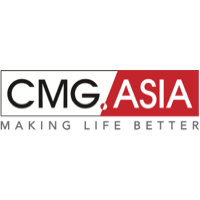
Is your brand truly leaving an unforgettable impression on your customers? In an increasingly competitive market, a strong brand is not only a means of recognition but also a foundation for building trust and loyalty. Developing a powerful brand helps your business assert its position, differentiate itself, and increase its appeal to customers. The following article will guide you through practical strategies for building a strong brand while examining the core value of branding in fostering growth and competing effectively in a volatile market.
Key Elements in Building a Strong Brand
1. Brand Identity
Your logo isn’t just an image; it’s the soul of your brand. A recognizable, unique logo that accurately reflects your company’s identity leaves a lasting impression on customers. Moreover, brand colors play an essential role, evoking emotions and attracting attention. Consistent color usage across all marketing materials not only reinforces brand recognition but also increases consumer awareness of your brand. Finally, your brand message should be clear, consistent, and compelling, serving as a bridge to communicate your company’s values and mission to customers.
2. Message and Core Values
Your company’s mission is the reason for its existence and the guiding principle for every action. To attract and connect with customers, the mission needs to be communicated in a clear and impactful way. The company’s vision is equally important, painting a picture of the future you aim to create—a long-term, inspiring goal that motivates both employees and customers. Core values are the principles you commit to upholding, shaping company culture and profoundly influencing how you operate and interact with customers.
3. Customer Experience

Your products and services should genuinely bring value and create a positive impression on customers. Product quality, customer service, and the shopping experience are key factors in building a strong brand. Furthermore, every customer interaction—from browsing your website and receiving emails to direct communication with employees—needs to be consistent and provide a positive experience. A good experience not only builds loyalty but also encourages customers to return in the future.
By focusing on these elements, you can create a powerful brand that stands out in the market and fosters long-term connections with customers. If you need more detailed information or support in the brand-building process, let us know!
Read more: Creating an Award-Winning Brand: Elevating Your Business to New Heights
Steps for Building a Strong Brand
1. Market and Customer Research
Understanding customer needs and desires: To create products tailored to Vietnamese women, M.O.I conducted surveys and consumer behavior studies to identify customers’ needs, trends, and challenges. This insight allows the brand to develop professional-grade makeup products that meet international quality standards, suited to the style, climate, and income of Vietnamese consumers.
Assessing competitor positions: M.O.I analyzed its competitors in the cosmetics industry to identify their strengths and weaknesses. This analysis not only helped M.O.I uncover standout opportunities but also enabled the creation of value-added products for customers.
2. Developing a Brand Story

Crafting a compelling brand story: M.O.I is not just a cosmetic brand; it creates a movement that inspires women to love themselves and stay updated with global fashion trends. M.O.I’s brand story carries a humanitarian mission, with a commitment to creating millions of jobs for the community and entrepreneurship opportunities for young people, establishing a strong emotional connection with customers.
3. Building Brand Identity
• Logo: M.O.I’s logo reflects the brand’s identity and values, contributing to strong brand recognition in customers’ minds.
• Color scheme: The brand’s colors are not only consistent but also evoke positive emotions and a sense of fashion and modernity that resonates with the target audience.
• Typography: Choosing the right font is essential in creating a distinct style and ensuring a cohesive feel across all media and marketing materials.
4. Brand Promotion
• Social media: M.O.I uses social platforms to engage with customers, share beauty trend content, and build a community of product enthusiasts.
• Website: A professional website makes it easy for customers to find product information and understand the brand’s values. M.O.I aims to provide the best user experience to build trust.
• Public Relations (PR): The brand actively participates in media events and organizes PR activities to enhance recognition and credibility.
• Events: M.O.I also prioritizes hosting events where they can engage directly with customers, introduce products, and build long-lasting relationships.
By executing these steps consistently and effectively, M.O.I Cosmetics has not only built a strong brand but has also solidified its position in the domestic and international cosmetics markets.
Measuring and Improving Brand Performance
Monitoring and Evaluating Brand Effectiveness

In the journey of building and developing a brand, tracking and evaluating effectiveness is essential. Using key performance indicators (KPIs) allows businesses to gauge the success of their branding strategies. Important metrics to consider include:
• Brand Awareness: This metric reflects the percentage of consumers who know and recognize your brand. To measure it, businesses can conduct surveys, market research, or analyze online data.
• Customer Satisfaction: Gauging customer satisfaction with your products and services can be done through feedback surveys, online reviews, and social media platforms. High satisfaction not only builds customer loyalty but also enhances the brand’s reputation in a competitive market.
Continuous Improvement
• Strategy Adjustment: Based on collected data and metrics, continuously refining brand strategy is essential to align with evolving customer preferences and needs.
• Data Analysis: Regularly reviewing emerging trends, customer feedback, and the performance of current campaigns enables brands to make informed adjustments.
• A/B Testing and Optimization: Conducting A/B tests and other optimization methods helps businesses identify what works well and improve underperforming elements.
• Responding to Market Changes: The market is always shifting, and brands must be flexible and ready to adapt to these changes to maintain competitiveness.
• Updating Products and Services: Regularly updating and enhancing products or services based on customer feedback and industry changes is essential to meet new demands.
• Flexible Marketing Strategy: Adjusting marketing strategies and communication channels allows brands to reach and attract customers effectively in a constantly changing market environment.
Read more: Continuous improvement: A breakthrough strategy for businesses to thrive in a competitive market
By carefully monitoring and evaluating brand effectiveness, businesses can ensure their brand not only remains strong but also aligns with customer preferences. This approach supports sustainable growth and opens the door to long-term success in today’s intensely competitive market.
Building a strong brand is more than designing an attractive logo or launching a captivating ad campaign; it is a journey with long-term benefits. A reliable brand not only attracts customers but retains them, driving revenue growth and maintaining a lasting competitive edge in the market. These values bring stability to businesses and create a close connection with customers, fostering loyalty and trust.
We encourage businesses to embark on the journey of building a strong brand today. CMG.ASIA is ready to support you every step of the way, providing optimal strategies and solutions to create a brand that stands out and endures in a rapidly changing market. Contact us to start your brand-building journey!






